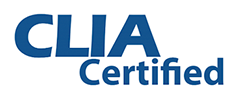The agonist antagonist conversion protocol refers to a switch in the pituitary suppression drugs during an IVF cycle. We now know that some form of pituitary blockade, either in the form of a GnRH agonist (e.g. Lupron, Buserelin, Nafarelin, and Synarel) or a GnRH antagonist (e.g. Cetrorelix, and Ganirelix) is an essential component in ovarian stimulation for patients undergoing IVF.
The follicles/eggs of women on GnRH-agonist “flare protocols” may be exposed to an exaggerated lupron-induced LH release in early follicular growth. This might not be problematic in “normal responders” but could be decidedly detrimental in “poor responders” and older women where endogenous basal LH levels are often raised. The ovaries may be sensitive to LH and where excessive exposure of follicles and eggs to testosterone could severely compromise egg development and thus embryo quality.
With the long lupron down regulation protocol where the pituitary gland is largely exhausted of its LH and residual minimal LH is present in the circulation by the time stimulation with gonadotropins begins, the above mentioned adverse testosterone-effect is largely negated. The down side is the fact that prolonged administration of GnRH agonists such as lupron (GnRH agonist down-regulation protocol) could suppress subsequent ovarian response to ovarian stimulation with gonadotropins, by competitively binding with ovarian FSH receptors. Agonist-Antagonist Conversion Protocol (AACP) may be able to oppose this effect.
With the AACP, low dose Ganirelix/Cetrotide is initiated at the onset of spontaneous menstruation or following bleeding that follows initiation of GnRH agonist (e.g. Lupron) therapy using a long-down-regulation protocol. The AACP has been most advantageous in poor responders where additional enhancement of ovarian response to gonadotropins may be achieved through incorporation of estrogen priming. The addition of estradiol for a week following the initiation of the AACP and prior to starting FSH-dominant gonadotropin stimulation appears to further enhance ovarian response presumably by up-regulating ovarian FSH-receptors.
There is one potential draw back to the use of the AACP, in that the sustained use of a GnRH antagonist (Ganirelix/Cetrotide) throughout the stimulation phase of the cycle appears to compromise the predictive value of serial plasma estradiol measurements which is a measure of follicle growth and development. Estradiol levels tend to be much lower in this type of protocol compared to agonist only (lupron) protocols or where a “conventional” GnRH antagonist protocol is employed (i.e. antagonist administration is initiated 6-8 days following initiation of gonadotropin stimulation). Rather than being due to reduced production of estradiol by the ovary(s), the lower blood concentration of estradiol seen with prolonged exposure to GnRH-antagonist, could be the result of a subtle, agonist-induced alteration in the configuration of the estradiol molecule, such that currently available commercial kits used to measure estradiol levels are rendered much less sensitive/specific. When the AACP is employed, we rely much more heavily on ultrasound growth of follicles along with observation of the trend in the rise of estradiol levels, than on absolute estradiol values. Thus, Dr. Bayrak refrains from prescribing the AACP in “high responders” who are predisposed to the development of severe ovarian hyperstimulation syndrome (OHSS) and accordingly where the accurate measurement of plasma estradiol plays a very important role in the safe management of their stimulation cycles.
It is noteworthy, that while using the AACP and estrogen priming in “poor responders” whose FSH levels were often well above threshold limits; the cycle cancellation has consistently been lower than expected. Many of these patients who had previously been told that they should give up on using their own eggs or their cycles cancelled due to too few mature follicles, and switch to ovum donation because of poor ovarian reserve, have subsequently achieved viable pregnancies using the AACP with estrogen priming. Estrogen priming and the agonist-antagonist conversion protocol is at least as successful as the microdose flare protocol based on medical data. Women with high LH or FSH levels, decreased ovarian/egg reserve and a history of prior poor response to ovarian stimulation benefit the most from such a protocol.










